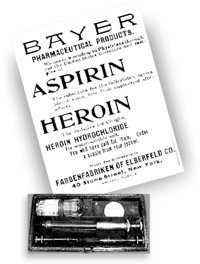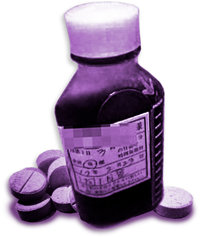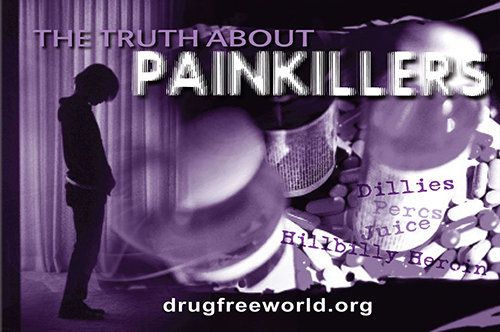Opiates, originally derived from the opium poppy, have been used for thousands of years for both recreational and medicinal purposes. The most active substance in opium is morphine—named after Morpheus, the Greek god of dreams. Morphine is a very powerful painkiller, but it is also very addictive.
In the sixteenth century, laudanum, opium prepared in an alcoholic solution, was used as a painkiller.
Morphine was first extracted from opium in a pure form in the early nineteenth century. It was used widely as a painkiller during the American Civil War, and many soldiers became addicted.
Codeine, a less powerful drug that is found in opium but can be synthesized (man-made), was first isolated in 1830 in France by Jean-Pierre Robiquet, to replace raw opium for medical purposes. It is used mainly as a cough remedy.
Photo credit: AP Wideworld
Throughout the early nineteenth century, the recreational use of opium grew and by 1830, the British dependence on the drug reached an all-time high. The British sent warships to the coast of China in 1839 in response to China’s attempt to suppress the opium traffic, beginning the “First Opium War.”
In 1874, chemists trying to find a less addictive form of morphine made heroin. But heroin had twice the potency of morphine, and heroin addiction soon became a serious problem.
The US Congress banned opium in 1905 and the next year passed the Pure Food and Drug Act requiring contents labeling on all medicines.
Methadone was first synthesized in 1937 by German scientists Max Bockmühl and Gustav Ehrhart at the IG Farben company. They were searching for a painkiller that would be easier to use during surgery, with less addiction potential than morphine or heroin.
Yet methadone is believed by many to be even more addictive than heroin.
Meanwhile, the illegal opium trade boomed. By 1995, Southeast Asia was producing 2,500 tons annually.
New painkillers came on the market with approval from the Food and Drug Administration: Vicodin in 1984, OxyContin in 1995 and Percocet in 1999.
These are all synthetic (man-made) opiates which mimic (imitate) the body’s own painkillers.















































